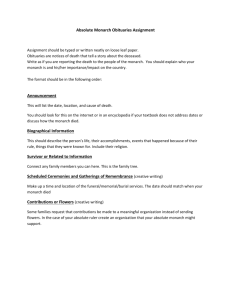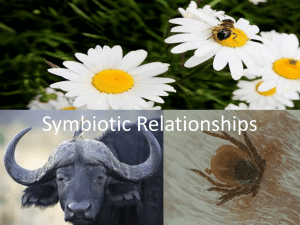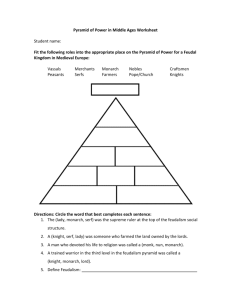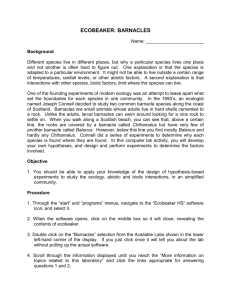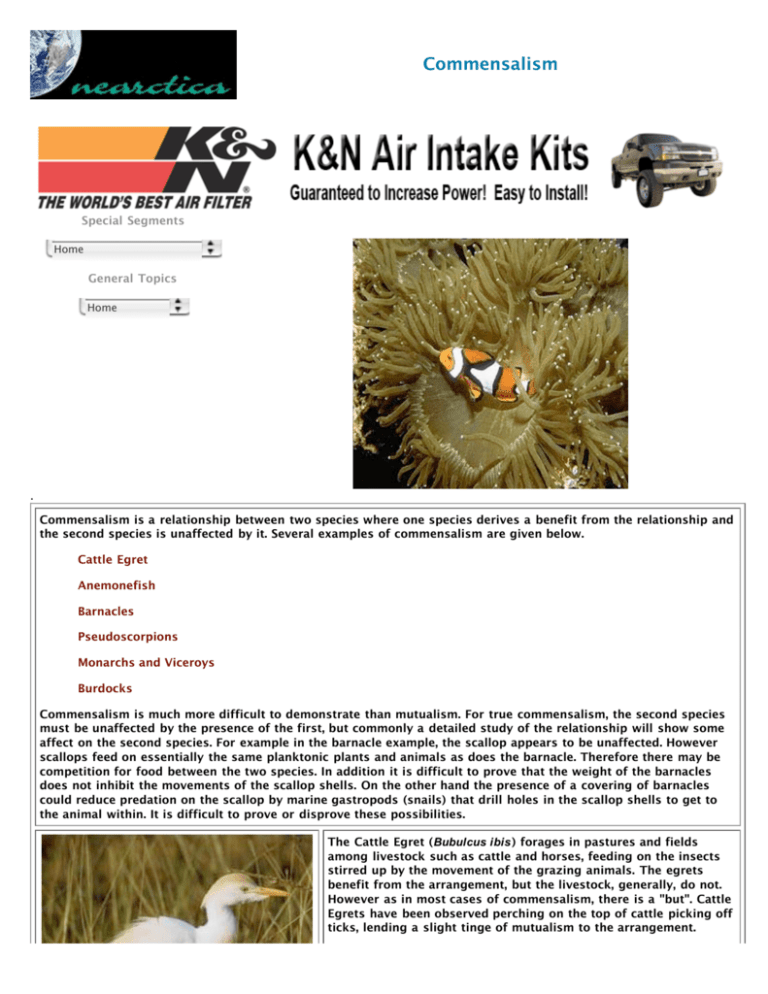
Commensalism
Special Segments
Home
General Topics
Home
.
Commensalism is a relationship between two species where one species derives a benefit from the relationship and
the second species is unaffected by it. Several examples of commensalism are given below.
Cattle Egret
Anemonefish
Barnacles
Pseudoscorpions
Monarchs and Viceroys
Burdocks
Commensalism is much more difficult to demonstrate than mutualism. For true commensalism, the second species
must be unaffected by the presence of the first, but commonly a detailed study of the relationship will show some
affect on the second species. For example in the barnacle example, the scallop appears to be unaffected. However
scallops feed on essentially the same planktonic plants and animals as does the barnacle. Therefore there may be
competition for food between the two species. In addition it is difficult to prove that the weight of the barnacles
does not inhibit the movements of the scallop shells. On the other hand the presence of a covering of barnacles
could reduce predation on the scallop by marine gastropods (snails) that drill holes in the scallop shells to get to
the animal within. It is difficult to prove or disprove these possibilities.
The Cattle Egret (Bubulcus ibis) forages in pastures and fields
among livestock such as cattle and horses, feeding on the insects
stirred up by the movement of the grazing animals. The egrets
benefit from the arrangement, but the livestock, generally, do not.
However as in most cases of commensalism, there is a "but". Cattle
Egrets have been observed perching on the top of cattle picking off
ticks, lending a slight tinge of mutualism to the arrangement.
Cattle Egrets are originally from Africa where they were adapted to
following the large herds of herbivores as they moved across the
savannah. They first appeared in South America in the 19th century
and have since spread to the eastern United States and California.
The Cattle Egret breeds in colonies near water (as almost all herons
do), but feeds almost exclusively with herds of cows and horses.
Color Photograph: Corel Corporation
Anemonefishes (sometimes called clownfishes) are a beautiful
group of tropical, reef fishes from the Pacific and Indian Oceans.
Almost all of the species belong to the genus Amphiprion. These
fishes are unusual because they have a close relationship with sea
anemones. Sea Anemones belong the class Anthozoa which includes
the hydras, corals, and jellyfish. The simple structure of the sea
anemone consists of a hollow cylinder surrounded by a crown of
tentacles. The tentacles are equipped with specialized cells called
nematocysts. Nematocysts are shaped and function like small
harpoons and contain a poison sufficient to paralyze or kill small
fish and other reef inhabitants.
Color Photograph: Copyright Corel Corporation
The anemonefish lives among the forest of tentacles of an anemone
and is protected from potential predators not immune to the sting
of the anemone. The anemonefish is protected from the sting of the
anomone tentacles by a substance contained in the mucous on its
skin. The exact nature of this protective substance is not known,
but is believed to be a combination of a partial natural secretion
and chemicals the fish harvests by rubbing up against the
anemone's tentacles. What ever the case may be, the anemone
treats the fish as part of itself and does not sting it.
Some consider this relationship to be a case of mutualism, claiming
that the anemonefish chases away other fish that might prey on the
anemone. However this aspect of the relationship is not well
documented.
Color Photograph: Copyright IMSI, Inc.
Barnacle are sedentary, highly modified crustaceans resembling
conical pyramids. Barnacles live by using long, feathering
appendages to sweep the surrounding water for small, freefloating organisms. The critical resource for barnacles is a place to
stay. Barnacles attach to rocks, ships, shells, whales, and just about
anywhere else they can gain a foothold. In the example on the left
the two barnacles are attached to the shell of a scallop. The
barnacle gains a place to live and, presumably, the scallop is not
harmed by the presence of the barnacles. Therefore the relationship
is commensalism.
Just as a curiosity, the bottom photograph on the left shows a
fossil of the extinct scallop Chesapecten from the Miocene (15
million years ago) complete with barnacles. The more things
change, the more they stay the same.
Color Photograph: Copyright Corel Corp.
Color Photograph: Copyright Nearctica.com, Inc.
Pseudoscorpions are small, predaceous arthropods, mostly less
than 1 centimeter is length. These scropion like animals have
pincers (chlicera) like scorpions, but lack a sting. Pseudoscorpions
are common, but usually overlooked because of their small size and
because they are concealed in the soil or under the bark of trees.
A few species of pseudoscorpions disperse by concealing
themselves under the wing covers (elyatra) of large beetles such as
the cerambycid beetle shown below. The pseudoscorpions gain the
advantage of being dispersed over wide areas while
simulataneously being protected from predators. The beetle is,
presumably, unaffected by the presence of the hitchhikers.
Color Photographs: Copyright Nearctica.com
The Monarch butterfly (Danaus plexippus) feeds as a larva on
species of milkweeds (Asclepias spp.). The milkweeds contain a
group of chemicals called cardiac glycosides. Cardiac glycosides are
poisonous to vertebrates (although not to invertebrates). The larvae
store these cardiac glycosides and the later adult contains them as
well. If a bird (or other vertebrate such as a mouse or frog) eats a
Monarch it finds them distasteful to begin with and is later sick.
Experimentally birds learn to avoid Monarchs. The Monarch
advertises its inedibility by a bright orange and black coloration.
The Viceroy (Limentis archippus) is not distasteful and does not
contain cardiac glycosides. However by mimicing the the pattern of
the Monarch it is also avoided by birds and other vertebrates that
have learned to avoid the Monarch. This particular relationship is
called Batesian Mimicry.
The Viceroy, therefore, is protected from vertebrate predation by
mimicing the Monarch, but the Monarch populations are unaffected.
However if the Viceroy is much more common than the Monarch,
the vertebrate predators may not learn that the Monarch is to be
avoided leading to increased mortality to the Monarchs.
Color Photographs: Copyright Nearctica.com, Inc.
Note: The photographs are not to scale. The monarch
is a large butterfly than the Viceroy.
A critical phase in the life cycle of plants is the proper dispersal of
its seeds. Many wonderful or strange adaptations have evolved to
insure this dispersal. One of these adaptations is the evolution of
recuved spines on the seeds or seedpods to attach the seeds to the
fur of passing vertebrates who carry the seeds away from the
parent plant. In the case of humans, fur is replaced by pants,
sweaters, socks, and other pieces of clothing. Plants, therefore,
anticipated the invention of velcro from several million years. The
plant benefits from the relationship by the dispersal of its seeds.
The vertebrates are not affected except, perhaps, by being annoyed.
One of the most famous examples are the burdocks, common weeds
found along roadsides and in empty lots and fields. The species on
the left is the Great Burdock (Arctium lappa). The seed heads (burs)
of burdocks long spines with hooked tips. The hooked tips catch
onto the hair of passing vertebrates (cows, deer, dogs, humans) and
the burs are carried elsewhere until they finally drop off or are
pulled off by the carriers.
Similar structures have evolved in other many other plant groups.
Color Photograph: Copyright Nearctica.com, Inc.
Copyright Nearctica.com, Inc. 2004. All rights reserved.




